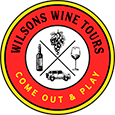Whether you simply want to know more information about what you are drinking or planning to have a wine tour soon, learning how to appreciate wine and being able to truly savour its essence is one of life’s greater pleasures.
There are many reasons people taste wine. Sommeliers do it for the optimum recommendation, professional wine tasters to give accurate reviews (especially on the newly released wines), and winemakers to make sure that they make the best wine for their loyal consumers. Of course, not only professionals can benefit from these wine tasting skills, as there are wine lovers and connoisseurs who just want to taste the best wines. When you know how to assess wine and its qualities, you will be able to appreciate wine better.
There are basic steps professionals tasters use to evaluate certain types and brands of wine, which are sight (look), smell (aroma), and taste (savour).
1. Sight
There are two key aspects when evaluating how a wine looks:
- Clarity – this is the measurement of the wine’s level of haziness with a range from excellent clarity to unsatisfactory. It will range from crystalline to opaque, then to a level where haziness is challenging to determine, up to slightly misty or moderately hazy.
- Appearance – this includes colour, intensity, brightness, and nuances of the wine. Other important factors to look at are the wine’s viscosity (the tears or legs on the side of the glass), cloudiness, and presence of sediments. In cases of sparkling wines, look for the persistence and fineness of the bubbles.
2. Smell
When you smell the wine, can you smell the fruits – citrus, tropical fruits, orchards (for white wines), or blue fruits, black fruits, or red fruits (for red wines)?
There are a few aromas you can take a look at to help you understand the wine’s characteristics:
- Wine flaws – look for indications if a wine is spoiled. A corked wined will have a musty old attic scent and the taste of a wet newspaper. This type is considered as a terminal and unfixable flaw. A scent of burnt matches will indicate that the wine has been bottled with a strong dose of SO2, vinegar will indicate volatile acidity (VA), and a nail polish scent indicates the presence of ethyl acetate.
- Fruit aromas – if you can’t smell any aromas that are a bit off, look for fruit aromas. Unless the wine is very old, cold, or sweet, you should be able to smell fresh fruit aromas.
- Wine barrel aromas – aged wine from oak barrels will smell like vanilla, smoke, toast, roasted nuts, caramel, chocolate, or espresso. Depending on the barrels used, it can impart a myriad of flavours and scents to the finished wines.
3. Taste
When its time to savour the wine, take a good sip of the wine like you are using a straw. Some chew it as they do with solid foods to help them provide a more profound experience. When tasting, try to identify several indicators:
- Acidity level
- Sweetness level
- Presence of tannin
- Body or the overall mouth-feel
- Alcohol content
- Flavours
- Finish
Using your taste buds, determine if the wine is harmonious, balanced, evolved, complex, and complete.
Now that you have the basic knowledge on how to assess wines, you will have a better wine experimenting experience.
If you’re looking for an Australian wine touring experience in the wineries of the Geelong region. Get in touch with Wilsons Wine Tours to book your tour today!


